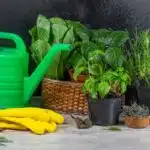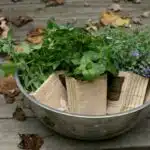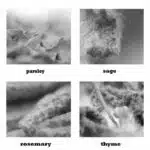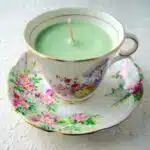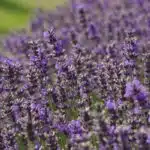Dried flower and herbal sachets are a traditional way of preserving the natural aroma and therapeutic properties of various plants. These small cloth bags filled with dried flowers and herbs have been used for centuries as a natural air freshener, deodorizer, and stress reliever. Today, they are still popular among those who seek alternative and natural ways to enhance their well-being.
As a herbalist or aromatherapist, creating your own dried flower and herbal sachets can be an enjoyable and rewarding experience. Not only do they provide an opportunity to use your knowledge of different plants and their benefits, but they also allow you to share your passion for holistic health with others. In this article, we will explore the art of making dried flower and herbal sachets step by step, from choosing the right materials to creating unique blends that cater to different needs.
Introduction: The Benefits Of Dried Flower And Herbal Sachets
As the old adage goes, “Nature has a remedy for every ailment”. This is particularly true when it comes to the benefits of dried flower and herbal sachets. These small pouches filled with aromatic herbs and flowers have been used for centuries in various cultures as a natural remedy for many ailments. From promoting relaxation to warding off insects, these sachets have a wide range of uses.
One of the primary benefits of dried flower and herbal sachets is their use in aromatherapy. The aroma from these sachets can have a profound effect on our mood and emotions. For example, lavender-filled sachets are known to promote relaxation and reduce stress, while peppermint-filled ones can help alleviate headaches and nausea. With DIY sachet-making, you have control over the herbs used and can tailor the aromatherapy benefits to your specific needs.
In addition to their aromatic benefits, dried flower and herbal sachets also have practical uses. They can be used as natural air fresheners or placed in drawers and closets to repel insects. Some herbs even have antibacterial properties that can help keep clothes fresh for longer periods of time. With so many benefits, it’s easy to see why dried flower and herbal sachets are becoming increasingly popular among those who prefer natural remedies over synthetic ones.
When it comes to making your own dried flower and herbal sachets, choosing the right materials is crucial. In the next section, we will explore how to choose the right fabric and herbs for your sachet-making project.
Choosing The Right Materials: Fabric And Herbs
When it comes to making dried flower and herbal sachets, choosing the right materials is essential. One of the most important decisions you’ll make is selecting the fabric for your sachet. The ideal fabric should be lightweight, breathable, and have a tight weave to prevent herbs from escaping.
To achieve this, consider natural fabrics such as cotton or linen. These materials allow air to circulate through the sachet while also providing a sturdy base for your herbal blends. Avoid synthetic fabrics like polyester or nylon as they can trap moisture and prevent proper drying of your herbs.
In addition to fabric selection, it’s critical to choose the right herbs for your sachet. Consider incorporating fragrant herbs like lavender or rosemary into your blend for a calming effect. Alternatively, citrusy herbs like lemon balm or peppermint can boost energy levels and improve focus. Ultimately, the choice of herbs will depend on your preference and desired outcome.
- A white cotton muslin fabric gives a classic look to a sachet while still allowing for proper air circulation.
- Linen fabrics add texture and depth to a sachet while remaining lightweight.
- An herb blend with chamomile flowers promotes relaxation and restful sleep.
As an herbalist or aromatherapist, you understand that every detail counts when it comes to creating effective dried flower and herbal sachets. By carefully selecting the right fabric and herbal blends, you can create unique products that offer both aesthetic appeal and therapeutic benefits.
Transition: Now that you’ve chosen the perfect fabric and herb blends for your sachets, it’s time to move onto the next step – drying your herbs properly. In the following section, we’ll explore some methods and tips for achieving optimal results when drying herbs at home.
Drying Herbs: Methods And Tips
After carefully selecting the herbs and flowers to use in your sachets, it’s important to properly dry them before creating your final product. There are two main methods for drying herbs: air drying and oven drying. Air drying involves hanging the herbs upside down in a warm, dry place with good ventilation. This method preserves the color and fragrance of the herbs better than oven drying, but it can take several weeks to fully dry.
Oven drying is a quicker method that involves placing the herbs on a baking sheet at a low temperature for several hours. While this method may be more convenient, it can cause some loss of color and fragrance in the herbs. It’s important to keep a close eye on the herbs while they’re in the oven to prevent burning or over-drying.
To preserve as much color and fragrance as possible when drying your herbs, it’s best to harvest them early in the morning after any dew has evaporated but before the sun is too strong. Be sure to handle them gently during the drying process to avoid bruising or damaging them. With proper care, you can create sachets with vibrant colors and delightful aromas that will last for months.
As important as choosing high-quality materials is preparing those materials correctly. Once you have dried your chosen flowers and herbs sufficiently, you’ll need to cut your fabric into small squares or rectangles that will fit inside your sachets. Cotton muslin is an ideal material for making sachets because it allows air flow while still keeping contents secure. After cutting your fabric pieces, sew three sides together before adding your dried flowers and herbs. The final side can be sewn by hand or machine stitched closed for a finished product that smells wonderful and looks beautiful!
Preparing The Fabric: Cutting And Sewing
Like a tailor, the first step in making dried flower and herbal sachets is to prepare the fabric. Cutting techniques are essential to ensure that each sachet is of equal size and shape. It is best to use scissors or rotary cutters when cutting the fabric, rather than tearing it, as this may result in uneven edges. Fabric choice is also crucial; linen, cotton, and muslin are excellent options as they allow air circulation and retain fragrance for longer periods.
Once you have cut your fabric into square shapes using appropriate cutting techniques, it’s time to sew them together. Sewing patterns can be simple or elaborate; however, it’s best to choose one that suits your skill level. A straight stitch with a seam allowance of ¼ inch is perfect for beginners. For those with intermediate skills, French seams add an elegant touch while ensuring that no raw edges are exposed. Whatever pattern you choose, make sure to leave a small opening on one side so that you can fill the sachet with herbs.
Preparing the fabric for dried flower and herbal sachets requires precision and attention to detail. The cutting techniques used will determine how well each sachet looks once completed. Sewing patterns should be chosen based on skill level and desired outcome. With the right tools and techniques, creating beautiful sachets becomes an enjoyable experience that anyone can do at home.
- As you sew each sachet by hand or machine, envision yourself giving them away as gifts.
- Imagine the joy on someone’s face when they receive your handmade sachet filled with fragrant herbs.
- Visualize how these little tokens of appreciation can brighten up someone’s day or help them relax after a long day.
With every snip of the scissors and every stitch taken on the sewing machine, remember that you are creating something special for others to enjoy. The preparation of the fabric is just one step towards achieving this goal; next comes filling the sachets with the right herbs and measuring the perfect combination of fragrances.
Filling The Sachets: Measuring And Mixing Herbs
Accurately measuring herbs is essential for creating the desired scent and balance in a herbal sachet. Different types of herbs should be blended together to create a unique and pleasing aroma. Selecting the right combination of herbs and aromatic substances is crucial to creating a pleasant and lasting scent. The proportions of herbs should be carefully considered to ensure an even distribution of fragrances. Appropriate fillers should be chosen to maintain the sachet size and shape. Finally, the herbs should be dried to a desired moisture level prior to filling the sachets to preserve the scent.
Measuring Herbs
As herbalists, we understand the importance of precise herb measurements when creating sachets. The proper amount of herbs can greatly affect the aroma and therapeutic properties of the final product. Herb measurement techniques vary depending on the desired strength and purpose of the sachet.
One technique is to use a scale to measure out exact amounts of each herb. This method is particularly useful for recipes that require specific ratios or for those who prefer consistent results. Another technique is to measure by volume using teaspoons or tablespoons. This method is more accessible and convenient for those who do not have a scale but still want to create a quality sachet.
Regardless of the method used, it is important to accurately measure each herb in order to achieve the desired scent and benefits. Too much or too little of any herb can throw off the balance of the mixture, resulting in an ineffective or unpleasant smelling sachet. Therefore, taking time to carefully measure out each herb will ensure a successful result.
Mixing Herbs
When it comes to filling sachets, herb measurement is just one part of the process. After measuring out the desired amount of each herb, the next step is to mix them together in a way that creates an effective and pleasing scent combination. This is where the art of herbal blending comes into play.
Herbal blending involves combining different herbs in a way that maximizes their therapeutic properties while also creating a harmonious aroma. There are several factors to consider when mixing herbs, such as the intended purpose of the sachet, the strength of each herb’s scent, and any potential interactions between herbs. A skilled herbalist will take all of these factors into account when crafting a unique blend for their sachet.
Ultimately, the key to successful herb mixing is experimentation and intuition. While there are certain guidelines and ratios that can be followed, every herbalist has their own approach to blending herbs based on their personal experience and knowledge. By carefully measuring and mixing each herb with intention and creativity, an herbalist can create a sachet that not only smells amazing but also offers therapeutic benefits to those who use it.
Choosing Herbs
In creating sachets, the selection of herbs to use is crucial in achieving its desired therapeutic properties. Herb selection involves choosing herbs that complement each other in terms of scent and purpose. Aromatic herbs such as lavender and rosemary are commonly used for their calming and revitalizing properties, respectively. Other herbs like chamomile and peppermint can also be added for their anti-inflammatory and digestive benefits. It is important to research the properties of each herb before selecting them to ensure a well-rounded blend.
Once the appropriate herbs have been selected, the next step is aroma blending. This process involves combining different scents into a harmonious blend that creates a pleasing aroma. The key to successful aroma blending is experimentation and intuition. Herbalists need to consider factors such as the strength of each herb’s scent, any potential interactions between herbs, and the intended purpose of the sachet when mixing them together.
In conclusion, selecting the right combination of herbs and blending them appropriately are essential elements in filling sachets with therapeutic benefits. Herbalists must possess knowledge on herb properties, experimentation skills, creativity, and intuition in crafting unique blends that cater to their clients’ specific needs or preferences. With careful consideration of these factors, herbalists can create sachets that not only smell great but also promote overall wellness.
Creating Unique Blends: Combining Scents And Properties
After measuring and mixing herbs, the next step in creating dried flower and herbal sachets is to create unique blends by combining scents and properties. Blending techniques involve understanding scent profiles and how different herbs can work together to create a desired effect. Some herbs have similar properties but different scents, while others have complementary scents but differing properties.
To create a balanced blend, it is important to consider both the scent profile and the intended use of the sachet. For example, a blend for relaxation may include lavender, chamomile, and lemon balm, while a blend for uplifting energy may include peppermint, rosemary, and lemon. Experimentation with different combinations can lead to discovering new blends that work well together.
Incorporating variety into your sachet blends can also make them more interesting and appealing. Consider using flowers such as rose petals or calendula in addition to herbs for added color and texture. A table of common herbs and their properties can serve as a helpful guide when selecting which ones to use in your blends.
| Herb | Properties |
|---|---|
| Lavender | Soothing, relaxing |
| Rosemary | Uplifting, energizing |
| Chamomile | Calming, sleep-inducing |
| Peppermint | Cooling, invigorating |
| Lemon Balm | Stress-relieving |
Blending scents and properties is an art form within herbalism that allows you to create unique personalized experiences for yourself or those you wish to gift with your sachets. Letting your creativity flow while keeping in mind the intended purpose will lead you towards concocting memorable blends that evoke positive emotions in people through aromatherapy. In the next section we will explore one particular herb’s soothing effects: lavender sachets- perfect for relaxation.
Lavender Sachets: Soothing And Relaxing
Did you know that lavender is one of the most popular herbs for relaxation and stress relief? According to a survey conducted by the National Institutes of Health, 60% of adults in the United States have reported using some form of complementary health approach, including aromatherapy. Lavender essential oil is known for its calming properties, making it a perfect addition to your homemade sachets.
When creating lavender sachets, consider experimenting with different scent combinations to enhance the relaxing effects. Some popular options include adding dried lemon balm or chamomile flowers for an extra calming boost. You can also mix in rose petals or jasmine flowers for a more romantic aroma.
Here are some DIY packaging ideas for your lavender sachets:
- Use small muslin bags or drawstring pouches.
- Wrap them in decorative tissue paper and tie with ribbon.
- Place them in mason jars and decorate with labels and twine.
- Attach them to thank you cards as a thoughtful gift.
- Create mini sachet pillows by sewing together fabric scraps filled with lavender buds.
Next up are rose petal sachets: uplifting and romantic. Incorporate this fragrant flower into your DIY herbal sachet collection to add a touch of romance to any space.
Rose Petal Sachets: Uplifting And Romantic
Rose petals have long been used in aromatherapy for their mood-lifting and stress-relieving properties. Incorporating rose petal blends into homemade sachets is a great way to enjoy the therapeutic benefits of this fragrant flower. Not only do these sachets smell lovely, but they also make great romantic gift ideas for loved ones.
To make your own rose petal sachet, start by gathering dried rose petals, lavender buds, and chamomile flowers. Mix them together in a bowl and add a few drops of rose essential oil. Then, spoon the blend into a small muslin bag or organza pouch and tie it closed with ribbon or string. You can also add other herbs or spices to customize the scent to your liking.
When using your rose petal sachet, simply place it in a drawer or closet to freshen up your linens or clothing. You can also place one under your pillow at night to promote relaxation and peaceful sleep. With its uplifting aroma and romantic appeal, a homemade rose petal sachet is sure to delight both you and those you choose to share it with.
Transition:
Now that we’ve explored the benefits of using rose petals in herbal sachets, let’s move on to another popular herb known for its calming properties: chamomile.
Chamomile Sachets: Calming And Sleep-Inducing
Like a warm embrace before drifting off to sleep, chamomile sachets provide a calming and soothing experience. Chamomile is widely known for its gentle sedative effects, making it an ideal herb for promoting restful sleep. Incorporating chamomile into your dried flower sachets can create a relaxing environment that encourages deep relaxation and peaceful slumber.
Chamomile blends well with other calming herbs such as lavender and lemon balm. Together, these herbs create a powerful combination that promotes tranquility and relaxation. Lavender has been shown to lower heart rate and blood pressure, which can help alleviate stress and anxiety. Lemon balm is also known for its calming properties, helping to ease nervous tension and promote restful sleep. Combining these herbs in your chamomile sachet creates a potent blend of natural remedies that promote deep relaxation.
Creating herbal sleep aids like chamomile sachets is an excellent way to harness the power of nature to improve your quality of life. Not only are these sachets easy to make, but they also provide lasting benefits that can help you get better rest every night. By incorporating calming blends like chamomile into your nightly routine, you can set yourself up for success in achieving a restful night’s sleep. Next, let’s explore how mint sachets can be used as refreshing and energizing alternatives to calm-inducing blends like chamomile.
Mint Sachets: Refreshing And Energizing
Chamomile sachets are an excellent way to induce a sense of calm and relaxation, but sometimes we need a pick-me-up. Mint is a fantastic herb to use in DIY sachets for its refreshing and energizing properties. Mint has been used for centuries in aromatherapy for its ability to awaken the senses and stimulate the mind.
To make a mint sachet, start by gathering your materials: dried peppermint leaves, cotton or muslin fabric, and ribbon or twine. Cut your fabric into small squares or rectangles, about 4-5 inches in size. Place a handful of peppermint leaves in the center of each fabric piece, then fold the edges up and tie with ribbon or twine.
Here are five mint recipes to try in your DIY sachets:
- Peppermint and eucalyptus: invigorating and decongesting
- Spearmint and lemon: uplifting and refreshing
- Chocolate mint: soothing and comforting
- Lavender mint: calming and relaxing
- Ginger mint: warming and energizing
Mint sachets can be used in many ways. Tuck them into drawers or closets to keep clothes smelling fresh, place them under your pillow for a restful night’s sleep, or use them as a natural air freshener around your home or office. The possibilities are endless with this versatile herb. Up next: eucalyptus sachets for their decongesting and invigorating properties.
Eucalyptus Sachets: Decongesting And Invigorating
Eucalyptus sachets are a great addition to your collection of herbal remedies. They have been used for centuries as a natural decongestant and invigorating agent. Eucalyptus blends can be used in many ways, including as inhalants, bath salts, massage oils, and more.
To make a DIY decongestant eucalyptus sachet, you will need dried eucalyptus leaves or essential oil, along with other herbs and flowers for added benefits and aroma. You can experiment with different blends to find the one that works best for you. A simple recipe could include equal parts of dried eucalyptus leaves, peppermint leaves, rose petals, lavender buds, and chamomile flowers.
Once you have your blend ready, simply fill up small muslin bags or organza pouches with the mixture and tie them up securely. Place them in areas where you spend most of your time like your bedroom or living room. You can also tuck them into your pillowcase for an all-night aromatherapy experience. Breathe in deeply to enjoy the decongesting effects of eucalyptus sachets.
Moving on to another amazing herbal remedy – cedarwood sachets: insect-repelling and grounding.
Cedarwood Sachets: Insect-Repelling And Grounding
Cedarwood is a well-known insect repellent and is used in many natural remedies. Cedarwood sachets are an excellent way to keep insects at bay while enjoying the benefits of natural aromatherapy. The scent of cedarwood has a grounding effect on the mind, making it an ideal choice for those looking to feel more centered.
Using cedarwood sachets is a simple yet effective way to repel insects from your home or garden. Here are three benefits of using cedarwood sachets:
- Cedarwood has insect-repelling properties that keep pests away without harsh chemicals.
- Cedarwood’s natural aroma adds a pleasant scent to any space, providing calming and grounding effects.
- Cedarwood sachets can be placed in drawers, closets, and other areas where insects are commonly found.
Incorporating cedarwood sachets into your daily routine can have numerous benefits for both your physical and mental health. In addition to its insect-repelling properties, cedarwood has natural aromatherapy benefits that promote relaxation and calmness. By using cedarwood sachets, you can create a peaceful environment that promotes well-being.
Transition: While cedarwood is known for its grounding effects, patchouli offers balancing properties that make it an excellent choice for those seeking harmony and stability in their lives. Let’s explore how patchouli sachets can bring balance and grounding to your home.
Patchouli Sachets: Balancing And Grounding
Patchouli, also known as Pogostemon cablin, is a member of the mint family and has been used for centuries in traditional Ayurvedic medicine. Its unique aroma is earthy, musky, and slightly sweet. In aromatherapy, patchouli is believed to have grounding and balancing properties that can help relieve anxiety and promote relaxation.
To make patchouli sachets, begin by gathering dried patchouli leaves and flowers. You can mix them with other herbs such as lavender or rosemary to create unique patchouli blends. Once you have your herbs, fill small muslin bags or organza sachet bags with the mixture. Tie off the bags with ribbon or twine and place them in drawers or closets to freshen up your living spaces.
Patchouli sachets are a perfect addition to any self-care routine. Whether you use them before bedtime to promote relaxation or throughout the day to balance your mood, these sachets can add a touch of natural fragrance to your daily routine. Try experimenting with different combinations of herbs to find the perfect blend for you.
Transition: Now that we’ve explored the balancing properties of patchouli sachets, let’s move on to cinnamon sachets – another herbal remedy known for its warming and comforting effects.
Cinnamon Sachets: Warming And Comforting
Cinnamon recipes are a favorite for many people, not just because of their taste but also their health benefits. Cinnamon is a spice derived from the bark of cinnamon trees, which have been used in traditional medicine for centuries. It contains antioxidants that protect cells from damage and reduce inflammation, making it an excellent addition to your daily routine. In addition, cinnamon has been linked to lower blood sugar levels, reduced risk of heart disease, and improved brain function.
Health benefits of cinnamon are not limited to its culinary use only; it can be used in herbal sachets as well. Cinnamon sachets offer a warm and comforting aroma that is perfect for cold winter nights or when you need some extra comfort. Its spicy scent provides a cozy atmosphere that helps soothe anxiety and stress while promoting relaxation. You can place these sachets in your drawers, closet, or even under your pillow to enjoy the calming effects of this sweet spice.
Incorporating cinnamon sachets into your daily routine can help you reap its health benefits. Whether you are looking for a natural way to relieve stress or want to add more warmth and comfort to your home, cinnamon sachets are an excellent option. So why not try making your own? With just a few simple ingredients like dried flowers or herbs and cinnamon sticks or powder, you can create fragrant sachets that will delight your senses and nourish your body.
Conclusion: Enjoying The Benefits Of Dried Flower And Herbal Sachets
Dried flower and herbal sachets offer numerous benefits beyond their delightful scents. These sachets are a form of aromatherapy, which has been shown to have a positive impact on mental health by reducing stress levels, promoting relaxation, and improving mood. Incorporating sachets into your daily routine can help you experience these benefits throughout the day.
One way to incorporate sachets into your routine is to place them in your pillowcase before bed. The relaxing scent can help you fall asleep faster and improve the quality of your sleep. Another way is to keep a sachet in your car or at your desk at work. The calming aroma can help reduce stress levels and promote relaxation during long commutes or busy workdays.
In addition to their aromatherapy benefits, herbal sachets can also be used for their medicinal properties. For example, lavender can be used to relieve headaches and insomnia, while peppermint can alleviate nausea and digestive issues. By incorporating these herbs into sachets, you can easily access their healing properties throughout the day without having to prepare teas or tinctures. Overall, using dried flower and herbal sachets is a simple yet effective way to improve your overall well-being.
Conclusion
Dried flower and herbal sachets are a simple yet effective way to bring the benefits of nature into your home. By using natural materials and herbs, you can create a calming and grounding atmosphere that promotes relaxation and well-being.
To make your own sachets, start by choosing the right fabric and herbs. Consider the properties of each herb and how they can benefit you. Then, dry your herbs using one of several methods for best results. Once your herbs are ready, prepare your fabric by cutting it to size and sewing it into small pouches. Finally, fill your sachets with a mixture of dried herbs that will provide the desired effect.
Whether you choose cedarwood for insect-repelling properties or cinnamon for its warming effects, these aromatic sachets are an excellent way to bring natural scents into your home. By following these simple steps, you can create beautiful and fragrant sachets that enhance any room in your house. So why not try making some today? Your senses (and your mood) will thank you!
Image Credits
- “Dried Lupine flowers” by FotoGrazio (featured)








